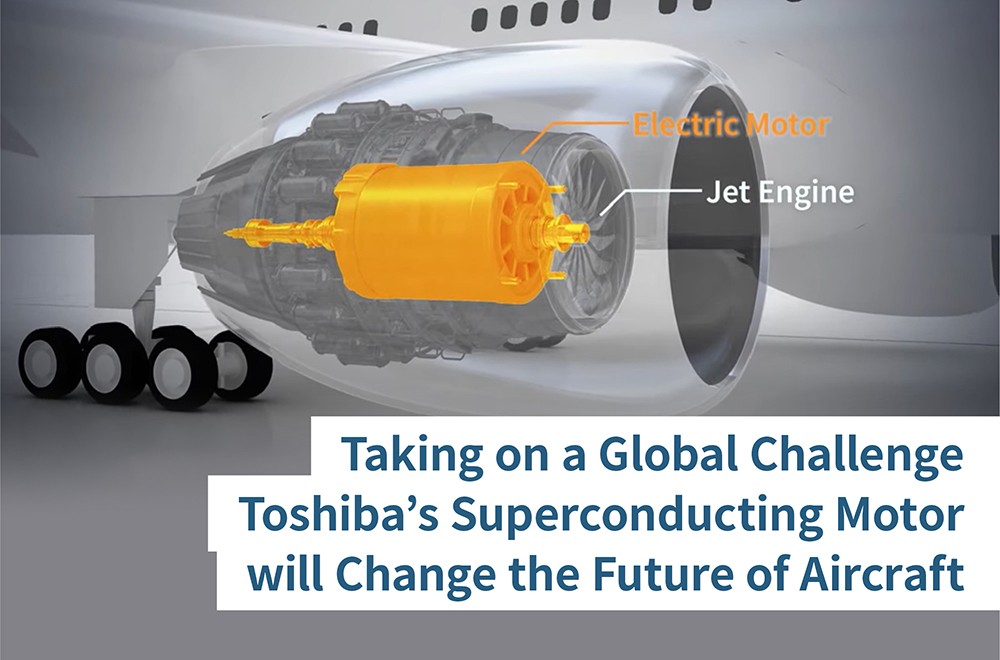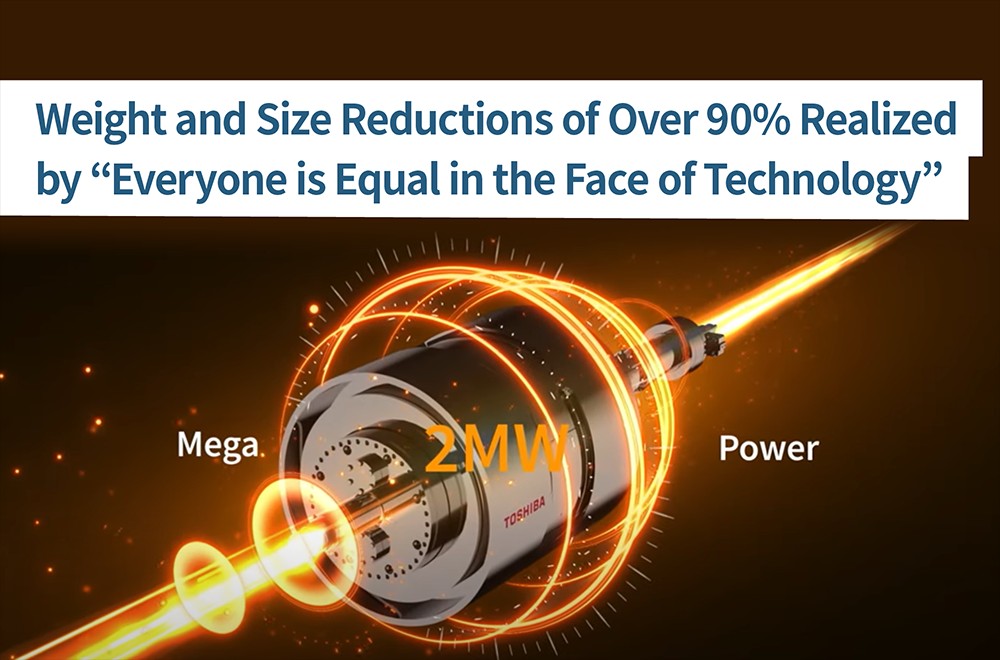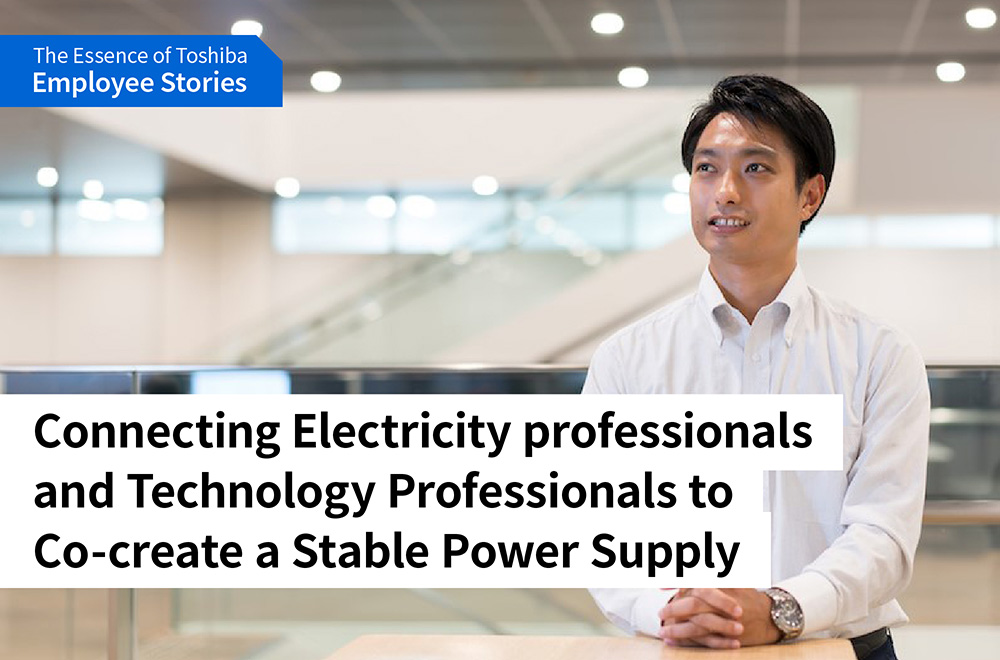Realizing the Dream of Hydrogen-Powered Flight with a Superconducting Motor Partnering with Airbus to Make it Happen
2025/10/09 Toshiba Clip Team
- Toshiba and Airbus partner to research superconducting technology for hydrogen aircraft.
- Toshiba has developed a superconducting motor less than one-tenth the weight and size of conventional motors!
- Future applications include ships and space development.
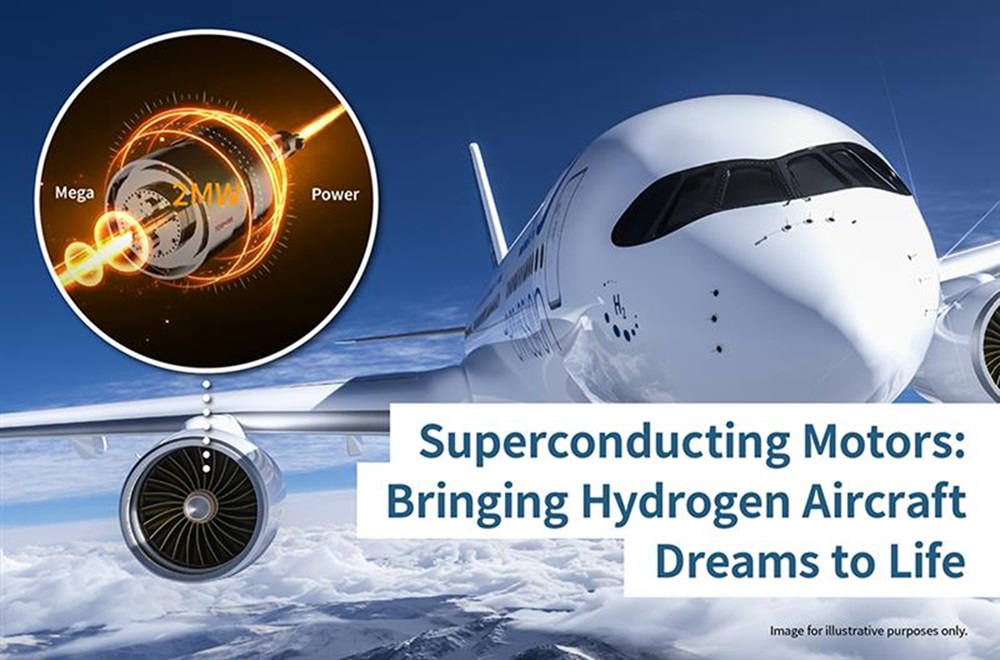
As the aviation industry works toward the ambitious goal of net-zero CO2 emissions by 2050, the shift to sustainable aviation fuel (SAF) is gaining momentum. However, truly effective reductions in the environmental impacts of aviation require innovation that goes beyond fuel to embrace the entire aircraft system. Key to this is the superconducting motor that Toshiba has developed for next-generation aircraft and other large mobility applications; a motor that is smaller and lighter than conventional motors and that achieves high output—offering a breakthrough that could change the future of flight.
Among the first to recognize the potential of this motor was Airbus, the world’s largest aircraft manufacturer, which is working to develop a hydrogen-powered aircraft with zero CO₂ emissions. Airbus took particular interest in Toshiba’s first prototype superconducting motor, unveiled in 2022. Then in 2024, the two companies announced a joint research initiative to explore the use of superconducting motor technology for next-generation hydrogen aircraft. With these two companies joining forces, how might the future of aviation be transformed?
Superconducting motors are perfect for hydrogen aircraft
In October 2024, at the Japan International Aerospace Expo 2024, Airbus and Toshiba announced that they would conduct joint research on superconducting motor technology. Airbus has long been working on the development of hydrogen aircraft—seen as a promising solution for zero-CO₂ aviation—and Toshiba’s superconducting technology caught its attention.
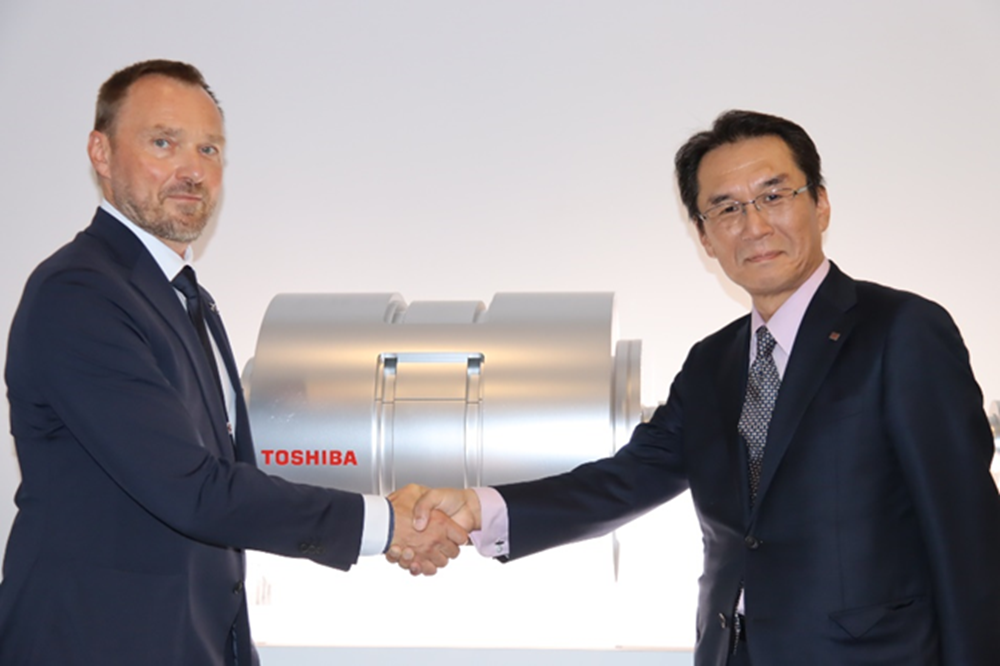
Fumitoshi Mizutani, who leads the superconducting motor development project at Toshiba, explains the key features of the technology: “In 2022, we succeeded in developing a prototype superconducting motor that is both lightweight and compact, but still capable of delivering high output of 2 megawatts. It is one-tenth the weight of conventional products with the same output. These features of Toshiba’s unique technology aligned closely with Airbus’s ideal specifications for hydrogen aircraft, which led to our collaborative research.”
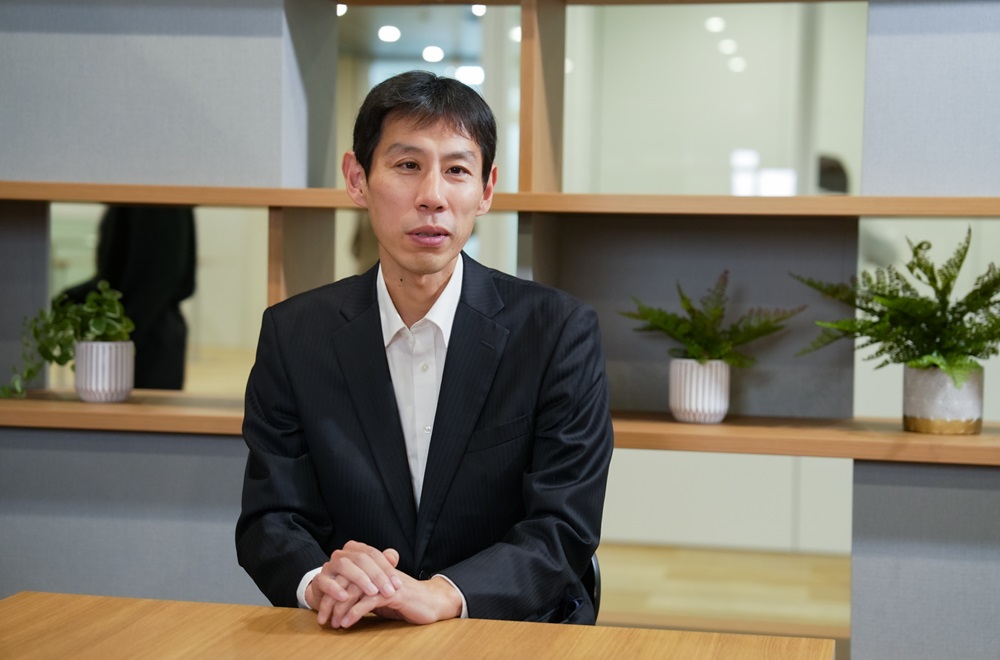
There are two ways to use hydrogen as a source of propulsion for aircraft. The first is to burn hydrogen in gas turbine engines, essentially replacing the fossil fuels used in today’s jet aircraft with hydrogen. The second approach uses fuel cells to convert hydrogen into electricity that powers the plane’s engine. Toshiba’s superconducting motor technology is expected to play a central role in enabling this second, electric propulsion method.
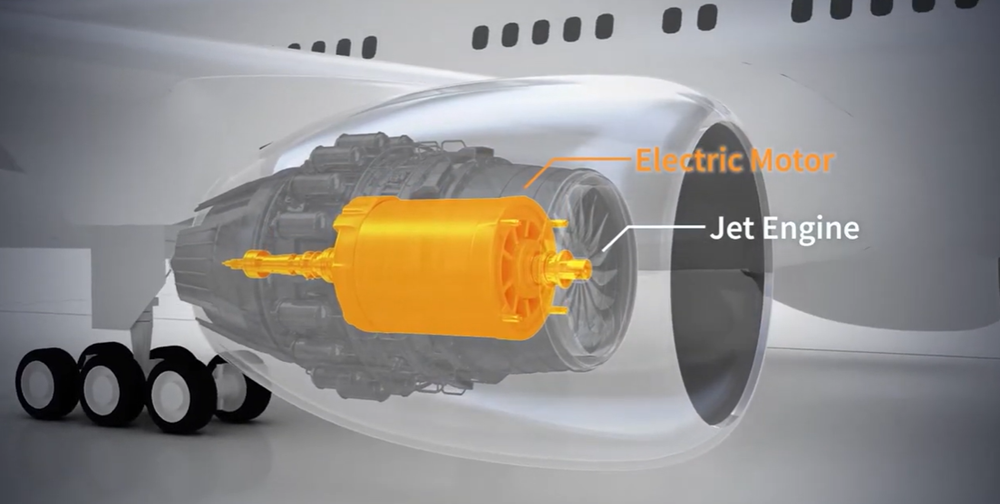
All considerations about installing engines on jet aircraft must confront a fundamental trade-off: achieving high output while keeping weight to a minimum. In this respect, superconducting motors are an ideal solution. What’s more, they offer an unexpected advantage. Hydrogen, which is a gas at room temperature, must be stored as a liquid at the extremely low temperature of -253°C in order to be used as aircraft fuel.
That requirement fits well with superconductivity technology, the phenomenon whereby metals and alloys exhibit zero electrical resistance and perform at their best when cooled to extremely low, cryogenic temperatures. That is achieved at ground level by using liquid helium (liquid at minus 269°C) and liquid nitrogen (minus 196°C).
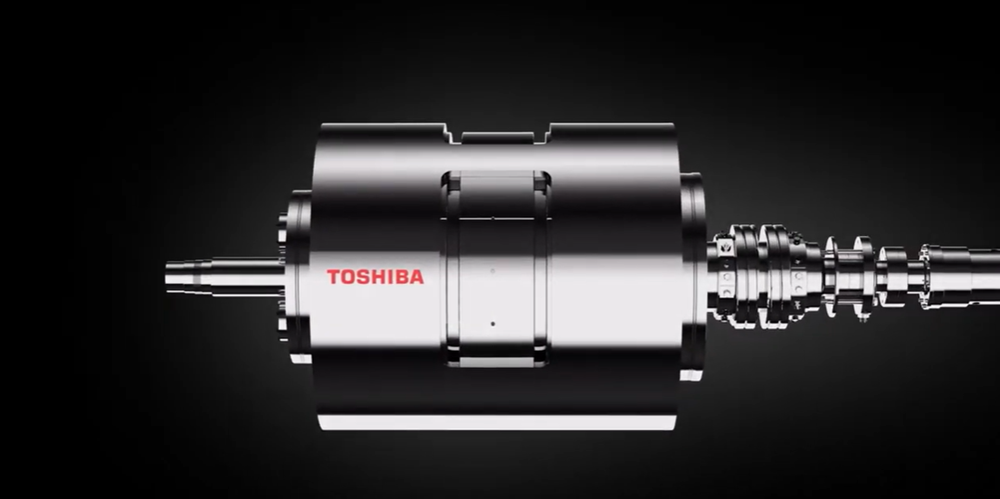
Using liquified hydrogen on board an aircraft both as fuel and to cool the superconducting motor realizes maximum efficiency in the limiting conditions of being in the air. It is a situation where the characteristics of superconductivity and the restrictive conditions of using it in a hydrogen aircraft produce a perfect match.
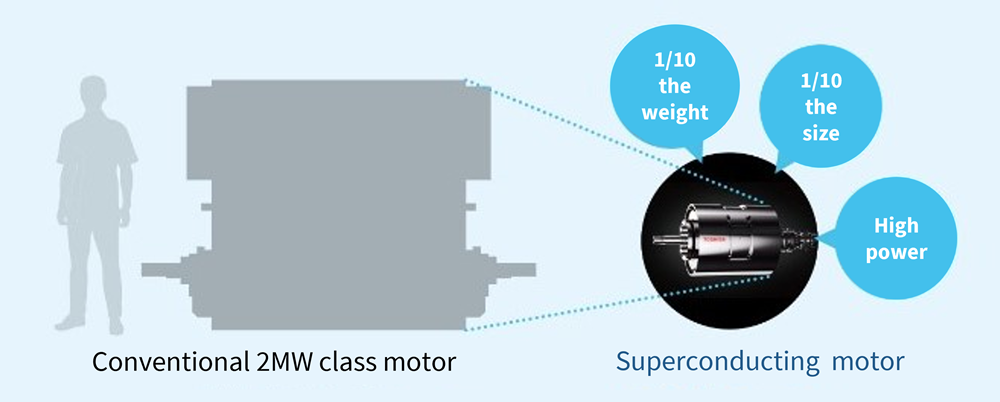
Kyohei Shibata of Toshiba’s New Business Development Department, which works in tandem with Toshiba’s R&D teams, recalls the early work on the motor. “We developed the superconducting motor by bringing together engineers working in related fields at our Keihin Operations, where we develop and manufacture generators for power plants. We have been researching superconductivity for over 50 years, since its early days around 1970. We have leveraged that knowledge to build up a track record in industrial superconducting equipment, and that gives us strengths other companies do not have.”
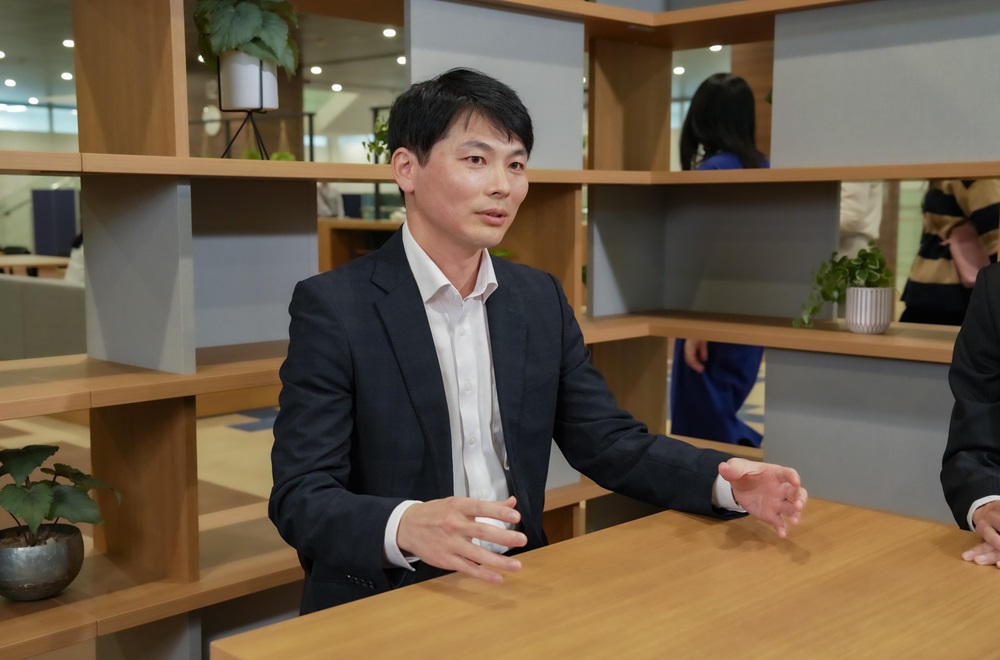
Superconductivity is a technology with a lot of promise. If adopted in aircraft, it is expected to boost fuel efficiency and extend flight range. It also has the potential for future expansion and application in other areas, including the shipping and space industries—marking the next stage in its evolution.
Dreaming beyond aircraft, into space
The introduction of hydrogen aircraft is widely anticipated as a way to achieve carbon neutrality. Looking back on the work to develop the prototype, Mizutani is enthusiastic about the prospects for social implementation of hydrogen-powered aircraft with superconducting motors. “I was really happy when we finally completed the first prototype and it started rotating, back in 2022. With the joint research with Airbus, I really hope we can speed up the real-world application of hydrogen aircraft development, if only by a little. My dream is to one day fly in a hydrogen aircraft powered by a superconducting motor that I developed.”
But the truth is that most aircraft still fly on jet fuel, and there are barriers to the motor’s introduction—it will be difficult without changes in the overall structure of the economy. Shibata says that Toshiba hopes to play a part in that transformation. “Hydrogen’s availability is still limited, and there are issues connected to transportation and storage. This may not be something we can achieve right away, but if we can make hydrogen aircraft a reality, it will give us a powerful tool for achieving carbon neutrality, so I think it is a project to realize a dream.”
Beyond that, the superconducting motor might well prove to be a dream solution in other areas, as Mizutani explains: “We first of all want to use it in aircraft, but going beyond that we also want to make it technology that can be brought into ships and even, eventually, into space development.”
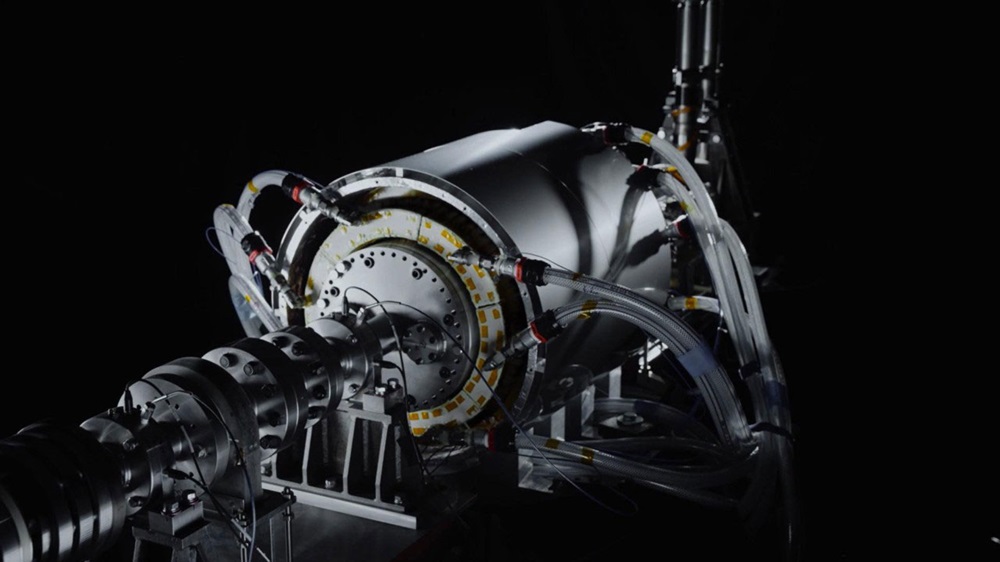
The evolution of technology will greatly change the shape of future mobility. Toshiba’s superconducting motors are in the vanguard of this trend, the key to paving the way to a sustainable future for the aviation industry. Toshiba’s R&D team is looking forward to changing what we take for granted in mobility, and Shibata is enthusiastic for the future.
“The spirit we bring to this development work is that we are the pioneers paving the way. We do not stop to search for the right answer, but act on the belief that we are choosing the best path to the future we want to see.”
“As engineers, there’s something truly romantic and exciting about developing next-generation aircraft,” say Shibata and Mizutani with a smile, their passion for a bright future welling up in them. With that passion as an engine, the day when hydrogen powers flight may not be so far away. Their dream has just begun, accelerating down a runway that leads to a bright sky.
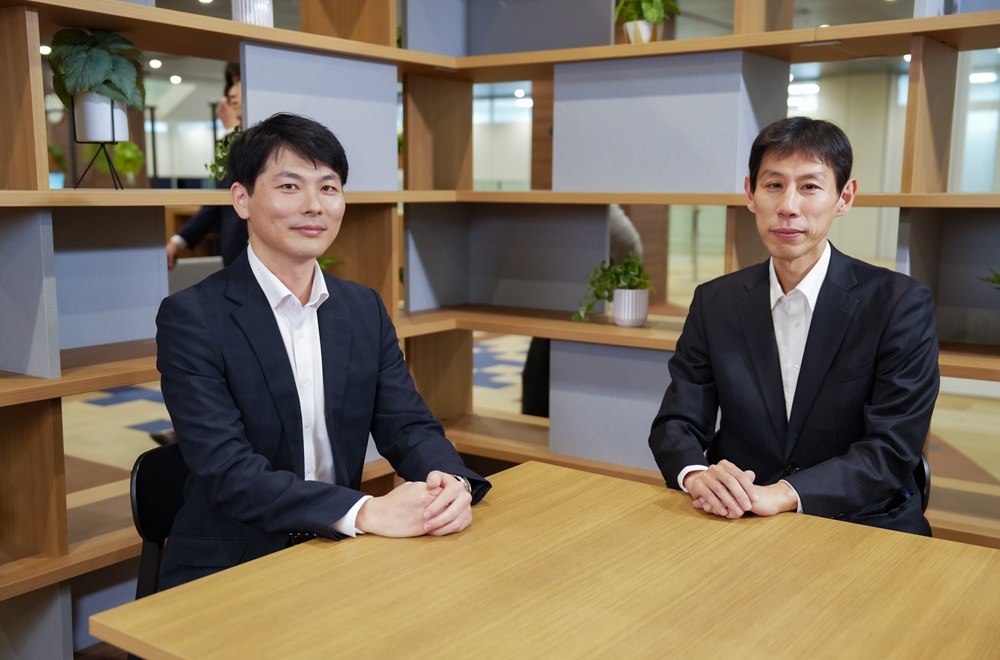
Related Links
*This section contains links to websites operated by companies and organizations other than Toshiba Corporation.
Airbus and Toshiba to partner on superconductivity research | News Release | Toshiba Energy Systems & Solutions





